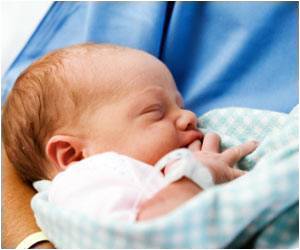A team of researchers have discovered a unique set of adult stem cells obtained from human muscle that can be used for treating muscle injuries.
A team of researchers have discovered a unique set of adult stem cells obtained from human muscle that can be used for treating muscle injuries.
The stem cells may also help treat diseases like heart attack and muscular dystrophy. The team from Children's Hospital of Pittsburgh of UPMC led by Johnny Huard, PhD, and Bruno Péault, PhD , isolated and characterized stem cells derived from blood vessels (known as myoendothelial cells).The blood vessels can be easily isolated using cell-sorting techniques, proliferate rapidly and can be differentiated in the laboratory into muscle, bone and cartilage cells.
‘These characteristics may make them ideally suited as a potential therapy for muscle injuries and diseases,’ according to Drs. Huard and Péault.
"Finding this population of stem cells in a human source represents a major breakthrough for us because it brings us much closer to a clinical application of this therapy," said Dr. Huard, the Henry J. Mankin Professor and vice chair for Research in the Department of Orthopaedic Surgery at the University of Pittsburgh School of Medicine.
"To make this available as a therapy, we would take a muscle biopsy from a patient with a muscle injury or disease, remove the myoendothelial cells and treat the cells in the lab. The stem cells would then be re-injected into the patient to repair the muscle damage. Because this is an autologous transplant, meaning from the patient to himself, there is not the risk of rejection you would have if you took the stem cells from another source," Dr Huard added.
Working in dystrophic mice while searching for a cure for Duchenne muscular dystrophy (DMD), Dr. Huard's laboratory team first identified a unique population of muscle-derived stem cells with the ability to repair muscle 8 years ago.
Advertisement
According to their study, myoendothelial cells taken from the blood vessels are much more efficient at forming muscle than other sources of stem cells known as satellite and endothelial cells.
Advertisement
Drs. Huard, Péault and colleagues in Children's Stem Cell Research Center (SCRC) are researching and developing numerous therapeutic uses for the population of stem cells the SCRC team identified. One of the most promising uses could be for the treatment of DMD, a genetic disease estimated to affect one in every 3,500 boys. Patients with DMD lack dystrophin, a protein that gives muscle cells structure.
Dr. Huard is an internationally recognized cell biologist conducting laboratory research into the therapeutic use of stem cells to treat a variety of musculoskeletal and orthopaedic diseases and injuries. In the lab, Dr. Huard is developing cutting-edge therapies to regenerate bone and cartilage and to repair damaged muscle. The application of these therapies could range from the repair of heart muscle damaged by heart attack to the repair of sports-related bone, cartilage and muscle injuries.
Dr. Péault is internationally recognized principally for his work on the prospective identification and characterization of human hematopoietic (blood) stem cells, of which his laboratory has also deciphered the ultimate origin during embryonic life. Besides blood development, his team also is investigating elusive populations of multipotent stem cells that persist in adult tissues, including dispensable ones like fat. Such cells should be invaluable for the regenerative therapy of multiple organs damaged by trauma, aging, genetic or acquired diseases.
Results of the study are published in the September issue of the journal Nature Biotechnology.
Source-ANI
LIN/C











